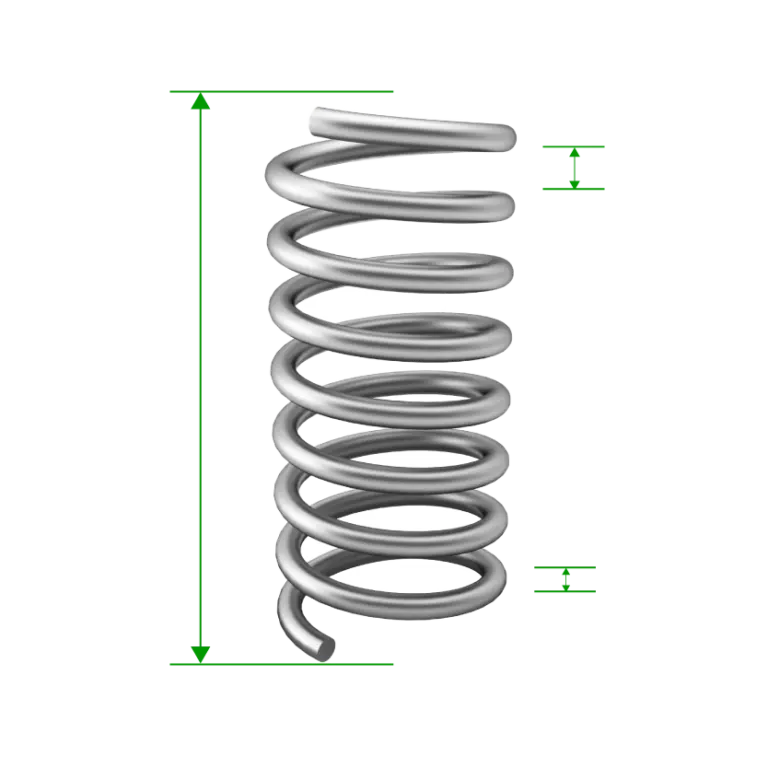In today’s competitive manufacturing landscape, custom spring design is more than a mechanical necessity—it’s a critical differentiator. At Jackson Spring, our decades of expertise enable us to transform problem-solving into innovation, delivering tailored spring solutions that enhance performance, reliability, and longevity. Whether you’re a vendor, supplier, or industry pro navigating complex applications, understanding the key factors behind custom spring design can help you build better systems from the ground up.
1. Defining Performance Goals
The foundation of a successful custom spring begins with asking the right questions:
- Load requirements: Will the spring need to manage constant loads, dynamic shocks, or vibration dampening?
- Deflection and travel range: How far must the spring compress, extend, or twist under working conditions?
- Life cycle and fatigue: What’s the target number of cycles before spring failure?
- Environmental considerations: Are your springs exposed to moisture, chemicals, high heat, or cryogenic temperatures?
Answering these early shapes material choice, geometry, and manufacturing path—key steps to tailored engineering solutions.
2. Material Selection Matters
Choosing the right material is critical to reach performance, cost, and compliance objectives for custom springs. Some common materials include:
- High-carbon steel – high strength and excellent fatigue life, ideal for general-purpose load-bearing springs
- Stainless steel (e.g., 17-7 PH, 302, 316) – corrosion-resistant for food, chemical, and outdoor applications
- Copper alloys – perfect where electrical conductivity, non-magnetic properties, or moderate corrosion resistance are needed
- Nickel-based and alloy steels – suited for extreme temperature or highly corrosive environments
We guide customers through material-selection trade-offs to ensure their springs meet application demands efficiently and reliably.
3. Geometry & Design Nuances
Custom spring design is a fine blend of geometry and engineering:
- Compression springs: Coil spacing, pitch, and active coils define load response
- Extension springs: Loop style, initial tension, and hook configuration shape performance
- Torsion springs: Arm length, coil diameter, and winding direction influence torque and be applied movement
Advanced features—such as variable diameter, conical shapes, and nested coils—can help reduce weight, improve responsiveness, or fit limited space constraints. Our CAD-driven prototyping ensures viability, performance, and manufacturability before tooling begins.
4. Surface & Finishing Options
Surface treatment not only protects your springs—it refines performance:
- Shot peening introduces compressive fatigue stress to improve cycle life
- Plating (zinc, nickel) adds corrosion resistance and aesthetic value
- Passivation, powder coating, PTFE or PTFE-lite coatings suit chemicals or harsh environments
- Black oxide or phosphate coatings help maintain lubricity
By matching treatment to environment and lifecycle goals, we help ensure long-term precision and dependability of your custom spring.
5. Prototyping & Testing
At Jackson Spring, we believe in “build it right the first time”:
- Rapid prototyping with 3D-printed or CNC-milled master mandrels reduces cost and accelerates iteration
- Simulation and finite element analysis (FEA) help refine performance prior to physical production
- Run-to-failure fatigue testing, load rate confirmation, and dimensional audit guarantee your custom spring performs under real-world stress
These steps reduce risk, shorten lead times, and help customers finalize designs with confidence.
6. Manufacturing Responsiveness & Scalability
From concept to mass production, we facilitate a smooth transition:
- Small- to mid-volume flexibility lets organizations prototype at scale without excessive tooling risk
- Lean and agile manufacturing using precision coiling machines ensures consistent tolerances across batches
- Quality assurance & traceability: In‑process load/dimension testing combined with serialization ensures each spring meets spec
We also support design-for-manufacturing (DFM) feedback to improve cost-effectiveness and optimize lead times—especially important in high-mix production environments.
Conclusion
Effective custom spring design demands technical depth, precision manufacturing, and consistent quality control—all rooted in collaboration. At Jackson Spring, our comprehensive approach—from material selection and CAD-driven design to advanced finishing and fatigue testing—puts decades of expertise at your disposal. Partner with us to transform your mechanical challenges into spring-forward solutions.

